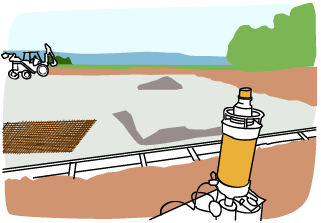
‘Site works’ describes the work required on your building site to prepare it for your home to be built, as well as the ongoing management of the building site. In effect, it’s all the work that’s carried out on the site that doesn’t directly involve putting up your house.
Good, effective site works are essential not just to ensuring that the build process runs along smoothly, but also to guarantee that you’ll have a house that’s well built, stable and secure.
Preparing amenities and administration
Site works can fairly roughly be divided into two parts (depending on who you ask). The first aspect involves preparing the necessary facilities and setting up what’s required for tradespeople to be able to work there effectively and to build your house.
This involves things like:
- setting up a site office and toilets
- putting up fencing and access controls
- making sure everyone on the site’s properly qualified and trained to the necessary health and safety standards
- providing safe, secure storage for tools and materials if necessary
- arranging traffic control, if it’s necessary
- preparing site waste disposal
- arranging sediment control measures to prevent any pollution going down drains
- consulting with neighbours, and assessing the potential impact on their properties from the work that’s being done on your site.
Earthworks and site preparation
The second aspect of siteworks is the work that needs to be done on the building site to ensure that your home can be built properly, that it’s built in the right place, and that it will be stable and secure.
This part of the process includes:
- demolishing any existing structures (which also includes cutting off existing electricity or water supply and drainage services, protecting adjoining properties and removing waste)
- testing the soil and structural engineering assessments
- clearing the land
- stump removal and grubbing
- termiticides and other soil treatments
- levelling or grading
- cutting and filling the land
- installing retaining walls if they’re needed
- surveying and setting out where buildings will go
- connecting water supplies, drainage and other necessary services
- Preparing trenches for slab subfloors, or holes for pilings or stumps
Once all of these preparations have been made, your building site will be ready for the subfloor to be installed, and for the builder to start putting your home together.







